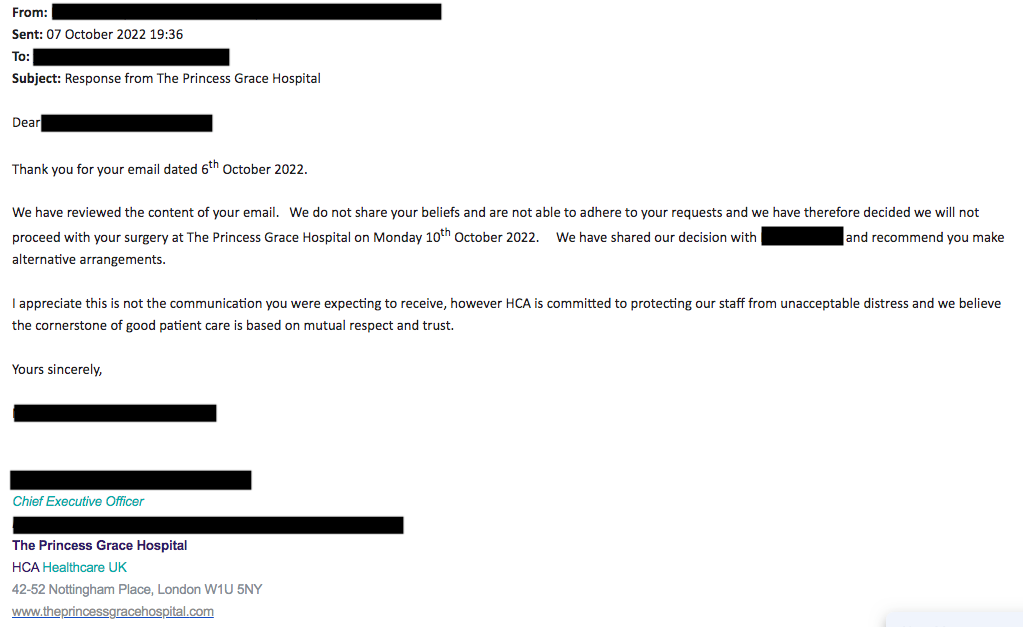The CBC reports on trans issues as if the trans ideology were just obviously and unmistakably the latest in a long line of progressive movements, entirely comparable to unionization and civil rights and feminism and lesbian/gay rights. It’s not. It’s a cuckoo in the nest.
In school board elections across Ontario this Monday, dozens of candidates are running on promises to roll back protections for transgender students, part of a concerted effort by conservative lobby groups to undo policies aimed at addressing systemic discrimination.
But those “protections” often destroy protections for female students. It’s not only conservative lobby groups who object to the destruction of women’s rights or protections.
The Canadian Anti-Hate Network, a non-profit that monitors extremism, recently posted that two candidates in Manitoba’s school board elections later this month who have expressed anti-LGBTQ views.
But are the views “anti-LGBTQ” or are they anti trans ideology? We can’t tell, because the CBC disguises them under the meaningless catchall “LGBTQ.” This not only puts a heavy thumb on the scale, it also makes it impossible to tell what they’re even talking about.
For weeks, some candidates in Ottawa, Waterloo, Hamilton, among other places in Ontario, have been using transphobic rhetoric in public, portraying gender-inclusive sex education as an attempt to indoctrinate their children.
Ok wait a minute. There’s something specific we can address. Treating gender ideology as simple obvious fact is a form of indoctrination. It’s not a simple obvious fact that some – indeed many – people have an interior “gender” that doesn’t match their external sex. Teaching children that that’s a thing is indeed indoctrination. It’s a new, and quite drastic, and absurd belief. How is that not a doctrine? How is teaching it not indoctrination?
An investigation by CBC News found that at least 20 candidates for trustee positions in Ontario had either used discriminatory terms in interviews, aligned themselves with transphobic lobby groups or used their social media accounts to amplify transphobic content.
For example, Mark Paralovos, a trustee candidate in Guelph, Ont., has repeatedly taken to social media to deny the existence of trans and non-binary genders.
“There are men. There are women. That’s it,” he tweeted earlier this month.
Oh the horror.
It’s “transphobic content” to say that humans are either men or women. Now, if you say a parallel thing about horses, or orangutans, or whales, you’re just stating a fact, but if you say it about humans you’re “denying the existence” of special magical people who are special and magical.
Terry Rekar, running for a trustee position in Peterborough, Ont., boasts of leading a chapter of Action4Canada, a conspiracy-minded far-right group that also denies the existence of gender minorities and describes gender-affirming surgery as “child abuse.”
Cutting off healthy breasts or penises at the behest of a new and warped ideology? That’s not child abuse?
Another candidate, Shannon Boschy, said Ontario’s sex-education curriculum was partly to blame for the rise in transgender and non-binary identifying students.
In an interview with CBC News, Boschy said this amounted to a “social contagion.” (According to Statistics Canada, fewer than one per cent of Canadians born between 1997 and 2006 identify as transgender or non-binary.)
(Note that the parenthesis simply states a percentage, it doesn’t compare it to anything, so it doesn’t establish that there has been no rise in transgender and non-binary identifying students.)
Boschy, the trustee candidate in Ottawa, said he wanted to repeal a policy that gives students final say about whether parents are informed if they identify as a different gender at school.
His opposition is based, in part, on how his own child transitioned genders. Boschy said the school didn’t inform him and that contributed to a rift with his child. “I lost my relationship with my child,” he said.
But for trans advocates, such privacy policies are vital for keeping gender and sexual minority students safe.
Transgender students are best placed to determine how and when they come out, said Fae Johnstone, a trans advocate who runs a consulting firm based in Ottawa that specializes in gender justice.
Are they? Always? In every single case? Including when they go on to transition and then regret it a few years later?
This is a crappy, reckless, tendentious piece of reporting.



